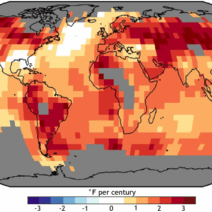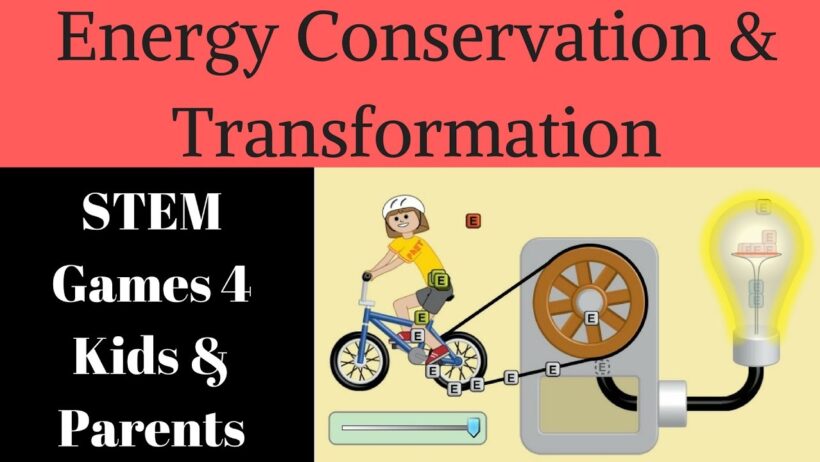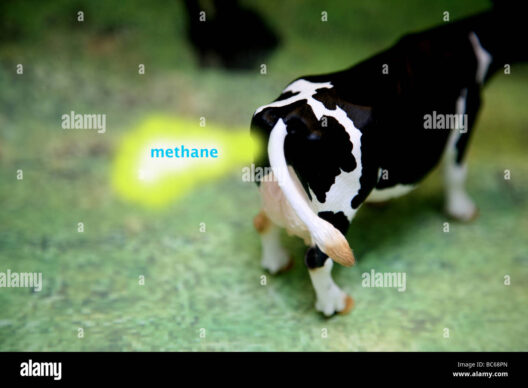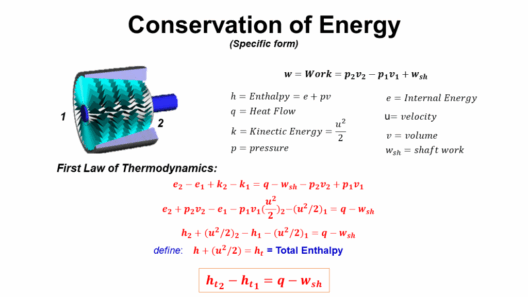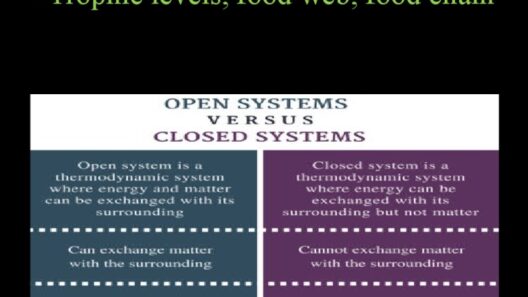Energy conservation during transformation is akin to a magician’s grand illusion—an intricate dance that manifests power without loss, making it seemingly disappear and reappear in multifarious forms. The beauty of this process lies not only in its inherent efficiency but also in its fundamental role in sustaining our ecosystems and human civilization. This phenomenon occurs across various contexts such as mechanical systems, biological organisms, and even within the very fabric of our technological advancements.
At its core, energy transformation refers to the conversion of energy from one form to another while striving to maintain the continuity of energy flow. To grasp this concept, one might envision energy as water flowing through a vast river system; it transitions from streams to lakes, evaporates into the atmosphere, and eventually precipitates back to the earth, all the while sustaining life. In the physical world, energy transformations abide by the critical law of conservation, which asserts that energy cannot be created or destroyed—only altered in its form.
One illustrative example lies in the realm of mechanical systems, where kinetic energy morphs into potential energy and vice versa. Think of a roller coaster poised at the peak of its ascent. Here, kinetic energy races toward its zenith, transforming into potential energy as the coaster lingers at the pinnacle. Once the drop begins, that potential energy elegantly converts back into kinetic energy as the coaster hurtles downwards. This continuous interchange exemplifies Newton’s laws of motion, where energy is conserved rather than expended. The roller coaster’s thrilling descent is a tangible manifestation of conservation principles in action.
Further delving into energy transformations can be observed in biological systems, particularly within the mechanics of photosynthesis. Plants serve as nature’s own energy factories, capturing solar energy and converting it into chemical energy. Throughout this process, sunlight engenders a transformation; carbon dioxide and water converge through a series of biochemical reactions, resulting in glucose—a form of stored energy crucial for sustaining life. In this mesmerizing alchemy, nothing is squandered. Every photon absorbed contributes to the greater tapestry of life, showcasing nature’s profound reliance on energy conservation.
Similarly, in our modern technological landscape, energy conservation during transformation can be exemplified through the operation of electric vehicles (EVs). These machines harness energy from various sources, converting it from one modality—be it fossil fuels in power plants or renewable sources like wind and solar—into electrical energy that propels the vehicle. When an EV accelerates, it transforms electrical energy stored in its batteries into kinetic energy. Moreover, during deceleration, the vehicle employs regenerative braking, capturing kinetic energy and converting it back into electrical energy to recharge the batteries. Such innovations underscore a critical objective: minimizing energy losses and maximizing efficiency.
However, the essence of energy conservation transcends the mere mechanics of transformation—it underscores the necessity of adopting sustainable practices in our everyday lives. The invisible flow of power that governs energy transformations unveils connections between consumption, conservation, and environmental stewardship. As societies increasingly grapple with climate change and resource depletion, understanding energy dynamics becomes paramount for fostering ecological balance.
In this context, one must explore how the metaphoric ripples of energy conservation resonate within larger environmental frameworks. Take, for example, the idea of a circular economy, which encapsulates the ethos of energy conservation at its heart. By reimagining waste as a resource, society can minimize energy transformation losses and enhance sustainability. Consider the recycling of materials. When old products are repurposed, the energy that was utilized to create them is not wasted but rather reintegrated into the production cycle, transforming what was once discarded into fresh value. This cyclic approach signifies a strategic realignment with nature’s own processes, emphasizing harmony and continuity.
Beyond technological advancements and economic frameworks, energy conservation resonates within individual actions. Simple adaptations in daily routines can contribute significantly to a broader cultural shift. Whether turning off lights when they are not needed, leveraging natural daylight, or utilizing energy-efficient appliances, each choice reverberates through the invisible web of energy flow. These small acts, seemingly inconsequential in isolation, collectively form a mighty tide that fosters change across communities and beyond. The symbolism of these choices embodies both an advocacy for personal responsibility and a tribute to collective action.
The future of energy conservation hinges upon increasing awareness and fostering innovation. As humanity grapples with finite resources and the consequences of climate change, fostering a deeper understanding of energy transformation emerges as a pivotal catalyst for change. Whether in the realms of scientific inquiry or motivational community initiatives, grasping the invisible flow of power equips individuals to hasten toward a more sustainable world.
In summation, energy conservation during transformation is a complex yet elegantly orchestrated process that sustains life and enhances technological efficacy. From mechanical systems to ecological frameworks, energy’s metamorphosis showcases nature’s profundity and humanity’s ingenuity. Through understanding the principles governing energy flow, societies can grasp the impact of their actions, embracing sustainability as a fundamental tenet of progress. Each moment embodies an opportunity to transcend mere existence, converting awareness into action, and ultimately, fostering a harmonious balance between humanity and the planet.
